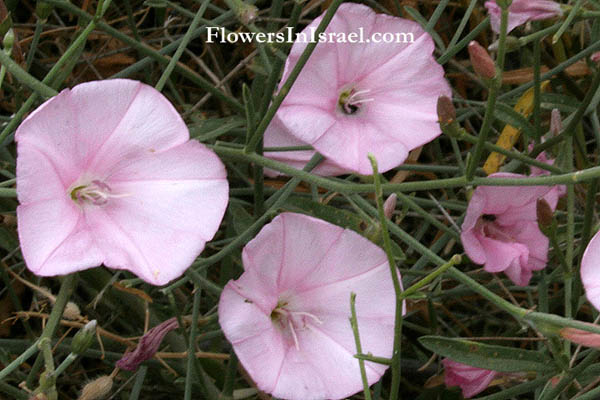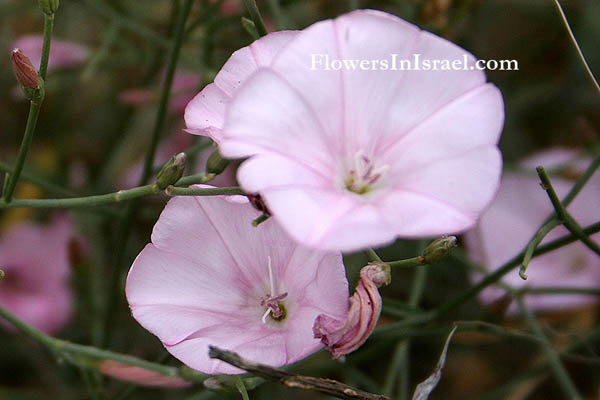Hebrew: חבלבל השיח, Arabic: دورآنيوم
| Scientific name: | Convolvulus dorycnium L. | |
| Common name: | Splendid Bindweed, Dorycnium bindweed | |
| Hebrew name: | חבלבל השיח | |
| Arabic name: | لبلاب دورآنيوم | |
| Plant Family: | Convolvulaceae, חבלבליים |

|
| Life form: | Hemicryptophyte | |
| Stems: | Up to 90 cm, shrubby, dichotomously panicled, branches stiff | |
| Leaves: | Alternate, entire | |
| Flowers: | sessile, solitary, end of branches, pink | |
| Fruits / pods: | Capsule | |
| Flowering Period: | April, May, June, July | |
| Habitat: | Bathas and semi-steppe shrublands | |
| Distribution: | Mediterranean Woodlands and Shrublands, Semi-steppe shrublands | |
| Chorotype: | Mediterranean | |
| Summer shedding: | Ephemeral |

Derivation of the botanical name: Convolvulus, Latin, convolvere, "to twine around"; "a bindweed" (Plinius), from convolvo, volvi, volutum, ere "to droll together, roll up, intertwine." dorycnium was a common poisonous plant, which was so called from the fact that it was used in battle for poisoning the points of spears. The Hebrew word chavalval, חבלבול. Shaul Tchernichovsky (1875 – 1943), poem: "You Are So Fragrant" (19.7.1929):... ניחוחם של חבלבלים, nichucham shel chavalvalim, fragrance of Convolvulus (Tchernichovsky's Note: chavalval, חבלבול, Convolvulus L. Winde, Bindweed, Вьюнок).
|